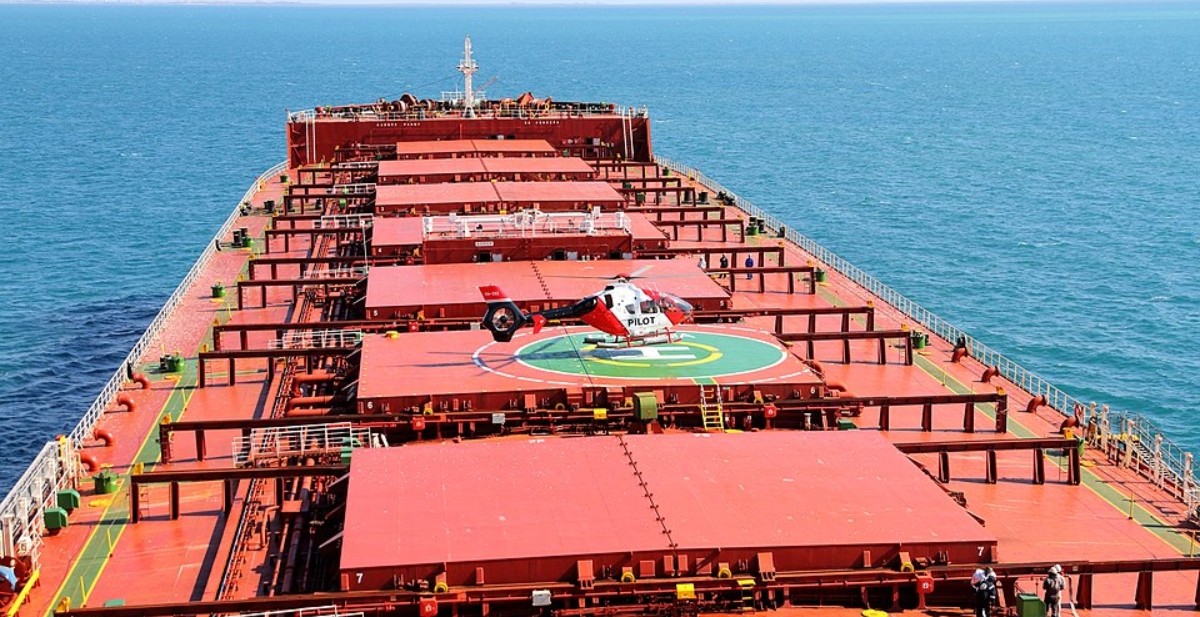Dry bulk's looming divide

Expected massive fleet growth hangs heavy over smaller segments in 2026
By Carly Fields
The prevailing positive sentiment within the dry bulk market may lead to misguided optimism in 2026 and beyond, according to a Clarksons analysis.
At last month’s Baltic Dry FFA Forum in Geneva, Louisa Follis, director and head of dry cargo analysis at Clarksons, intentionally addressed dry bulk supply dynamics ahead of her demand analysis to underscore the sheer magnitude of incoming tonnage.
You can rewatch the forum here.
Her immediate focus was the fleet delivery pipeline, which presents significant data points. The market is anticipating the arrival of "almost 600 new bulkers due to hit the market next year”, she said, marking the highest number in a decade. Furthermore, relative to deadweight tonnage, the industry is facing up to a "heavy delivery programme”.
On a year-on-year change basis, the current pace represents the "highest delivery pace in about five years”, Follis said.
However, distinguishing between the different vessel segments, she said that the growth trajectory is not uniform. For example, the capesize fleet exhibits a more manageable supply profile. When accounting for demolitions, the net fleet change for capesizes follows a generally "downward pattern in terms of the net additions to the fleet”. And while a "bit of a rise" is projected for 2026, the sector maintains a "low trend for net fleet growth”.
Conversely, the panamax and geared sectors are moving in the opposite direction, demonstrating a definitive upward trend. For the upcoming year, net fleet growth in these segments is projected by Clarksons to be in the region of "about 4%”. This pronounced supply expansion calls for scrutiny of the forward curve's validation.
Capesize demand
On the demand side, the capesize sector is supported by robust demand drivers, Follis said. Forecasts for the iron ore trade, particularly from non-traditional origins, show strong momentum. While there is a wide variance around 2026 projections, the medium-term outlook is aggressive: "We are looking at around 60m for 2027, and certainly by the end of the decade, over 100m tonnes." She added that a significant portion of this growth will serve to "replace other origins”, including Chinese domestic supply, but maintained this is a "growth story for the capesize market”.
In addition, bauxite trade continues to contribute positively, with capesize volumes from West Africa acting as "another big growth story”. While immediate growth figures are tempered — "I don't think we're going to see 23% growth next year, but we've got maybe 4% or 5% growth factored in"— the overall expectation for capesizes is a net expansion in tonne-miles. This confluence of demand factors leads to a favourable base case scenario:
"It's possible for trade growth alone to equal, or maybe even surpass, the fleet growth for the capesize sector," Follis said.
Thus, the capesize market presents a scenario where "demand growth [is] probably slightly higher than supply growth”.
The smaller segments face more complexity. Although certain pockets of support exist, the 4% fleet growth presents a considerable challenge. Seaborne coal trade, for instance, shows panamax vessels "chipping away there at some of those capesize cargoes”. This year, this shift accounted for a growth of "about 27 million tonnes” for panamaxes, predominantly capturing market share from capesize vessels - a trend expected to continue next year.
Further support comes from the expected expansion in grain trade volume, driven by attractive pricing and positive early yield estimates from South America. The geared market is also supported by increased construction, resulting in more backhaul taking place, and expanding fertiliser trade. The necessity for greater fertiliser application to enhance South American yields translates directly into increased import demand, a factor that has been "extremely positive to the geared market so far this year”.
Trade imbalance
Despite these favourable trade trends, Follis asserted that "we still need more than just trade growth in order to match that" 4% fleet increase. "We don't think trade growth alone will be 4% so there is a gap to be bridged here for the panamaxes and the geared."
Addressing potential factors that might close this supply-demand gap, Follis considered a slowdown in new deliveries but dismissed this as unlikely, noting that the schedule is "very, very much on track”, with only the handysize segment lagging this year.
The "more important" variable remains the trade situation, particularly the resurgence of tariffs and trade disruption. This is manifesting as "fragmentation and complexity of trades" in the grain sector. Reported US grain export sales to China of zero underscore the ongoing geopolitical friction. While US Gulf grain export volume has increased overall, the cargo is not moving on panamaxes but on "supers and handies”, and crucially, to much shorter haul destinations.
This shift means that despite maintaining volume, the industry is "not getting the tonne-miles, we're not getting the distance”, said Follis.
Cargoes are being redirected to destinations like North Coast South America and West Africa, sacrificing the distance typically seen on runs into China.
Ultimately, while the market is bolstered by the current positive sentiment, Follis’s analysis highlights a bifurcation where the capesize sector appears fundamentally sound and the panamax and geared markets face a structural challenge driven by significant fleet growth and the complicating factor of trade disruption leading to tonne-mile contraction.